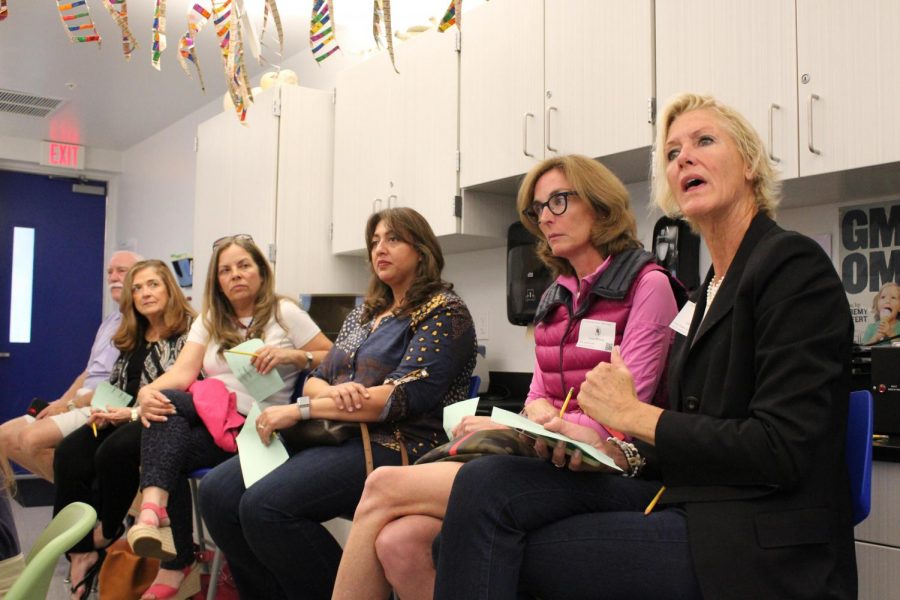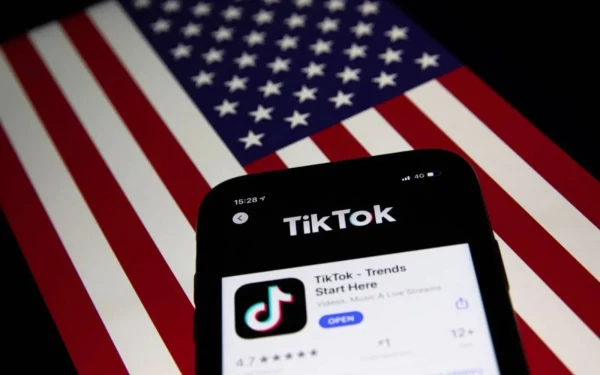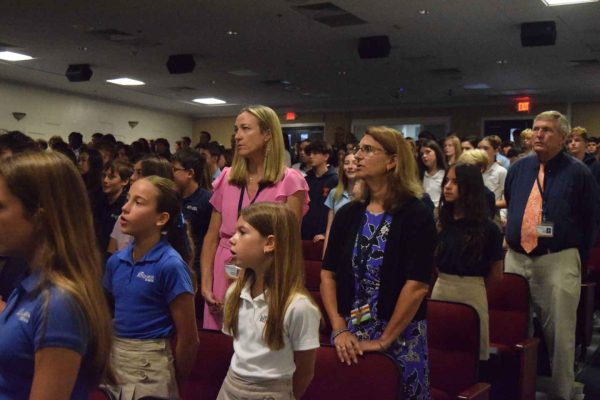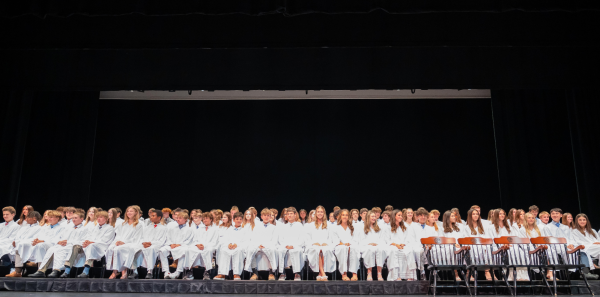Students Present GMO Debates to Parents
Mrs. Candace Cox (far right) asks a question to students during Mr. Oster’s G-period class.
Blue strawberries? Giant fruit? Man-made organisms and food? All of these topics were discussed in the second annual Grand GMO Debate which took place in Mr. Matthew Oster’s Accelerated STEM classes on January 29 and 30. In this debate, the eighth-graders in these classes were separated into two factions: pro-GMO and anti-GMO. These students discussed real-world issues with parents listening and voting for which side made the most compelling argument.
Although they have been around since the 1970s, GMOs, also known as genetically modified organisms, have recently become more prevalent and can be found in many products throughout American grocery stores. GMOs can take many forms and come in many different shapes and sizes. For example, in grocery stores you may see abnormally large strawberries that have been genetically enhanced. This is caused by inserting the desired gene, either from another organism or one created in a lab, into the strawberry seeds or the strawberry itself to make it grow bigger. Scientists do this using tools such as a gene gun or a viral vector. Inserting the gene also makes it a trait that can be passed along to future generations of the fruit.
Although this topic is complex, students were engaged in this debate and seemed to enjoy it.
“I was on the pro-GMO side of this debate,” said eighth-grader Daelan Pinsky. “I really enjoyed this project and it really opened my eyes to the number of GMOs in grocery stores. This was a great experience to explore the difference of opinions in [both] students [and] parents.”
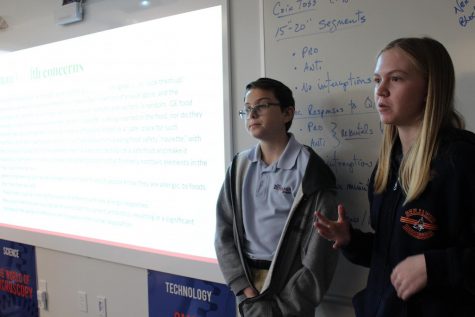
Eighth-grade students Keane Adam and Addie Vining present their anti-GMO argument in their D-period STEM class.
Though students were assigned which team they were on, they had to conduct a lot of research to understand both sides of the issue.
“I had a good understanding of the other side of this debate, but I am still pro-GMO,” said Pinsky. “GMOs have many good effects such as adding nutrition to food and also adding flavor.”
“I was on the anti-GMO side of this debate,” said eighth-grader Grayson Murphy. “I liked how everyone got to contribute, and I learned so much about GMOs. I liked how the parents came in and judged us. It made it seem more professional.”
Parents enjoyed being part of the process and also found the debate interesting and enlightening. “The topic of GMOs is current and involves science with a global humanitarian interest,” said Mrs. Candace Cox, one of the parents who attended the debates. “The ability to be able to create food under various weather and soil conditions is literally life-altering,” she said.
Students also feel like they learned a lot from their research.
“I learned the pros and cons of GMOs and how they affect society. I feel this is important because they are everywhere, and they are [so prevalent] in society,” said Murphy. “I believe this [debate] should be held annually because it is a good way for students to communicate with each other on school topics.”
According to Mr. Oster, roughly 70-90% of all grocery store items contain GMOs. Despite these facts, parents and the general public seem to be unaware of them.
“I had no idea that so many items in our grocery stores were GMO,” said Cox.
That’s exactly why Oster gave this project to the students and invited their parents.
“I coordinated this debate to make students, as well as parents, aware of GMOs,” he said. “This is important because GMOs are everywhere and they will preoccupy most of our food sources. I wanted parents to be educated about GMOs and know what to buy and what not to buy at grocery stores. I also wanted to make them aware of this fairly new topic. Most people do not even know what GMOs are.”
Scientists initially created GMOs to use in agriculture as it makes it easier to grow fruits and vegetables in different conditions. GMOs can provide added nutrition as well. For example, a type of rice known as golden rice contains GMOs that make it more nutrient-rich. This could be beneficial for people who live in regions of the world where food is scarce.
GMOs can also make certain foods resistant to pestilence and disease.

Eighth grader Logan Smith, raises his hand to jump in on the debate.
For example, papaya, as we know it today, would not have existed if it were not for GMOs. Rainbow papaya is an F-1 hybrid variety of papaya created by scientists. This new species is resistant to the virus that was destroying papayas, and now this is the only species of papaya currently available in the world.
GMOs also have the ability to create better-tasting foods. However, alongside all of the great things GMOs can do, scientists are unsure about the long term effects of consuming GMOs. In some cases, people have died due to anaphylactic shock. This is a result of farmers and scientists inserting a gene that individuals may be allergic to. There may be other health issues concerning GMOs, but the research is ongoing. So, until we know more, the GMO debate will continue to rage on. The benefits are numerous, but the potential disadvantages may be as well.
